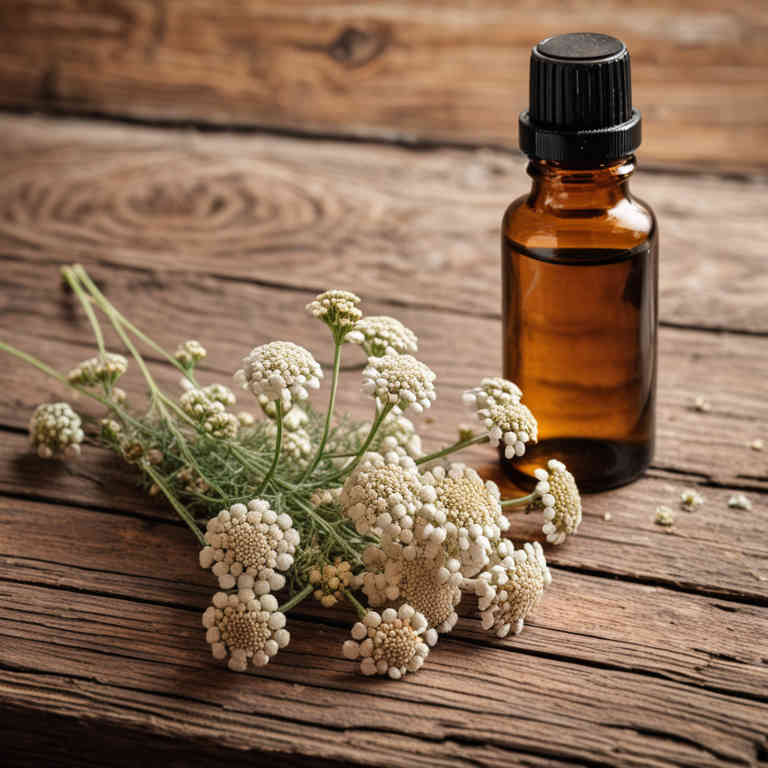Achillea millefolium essential oil for medicinal use

Achillea millefolium essential oil is derived from the dried flowers of the yarrow plant, known for its aromatic and therapeutic properties.
It is commonly used in herbalism to support digestive health, reduce inflammation, and alleviate symptoms of colds and respiratory issues. The oil is often applied topically for its antiseptic and wound-healing qualities, and it can also be used in aromatherapy to promote relaxation and ease stress. In traditional medicine, it has been valued for its ability to support the circulatory system and reduce fever.
Its versatile applications make it a valuable component in both internal and external herbal preparations.
Uses
Achillea millefolium essential oil has been used to treat various ailments for centuries, with its roots in ancient herbal medicine.
Historically, it was utilized by the Greeks and Romans for its healing properties, particularly for wounds and skin conditions. Traditionally, it was also believed to aid in digestion and relieve menstrual discomfort. In modern times, it is valued for its antiseptic, anti-inflammatory, and analgesic properties, making it a popular choice in aromatherapy and natural remedies.
Today, it is commonly used to support respiratory health, reduce stress, and promote skin healing.
Benefits
Achillea millefolium essential oil has health benefits such as anti-inflammatory, antimicrobial, and antioxidant properties.
It is commonly used to support skin health and treat minor wounds due to its ability to promote healing. This essential oil may also aid in reducing stress and anxiety when used in aromatherapy. Its calming effects can help improve mood and mental clarity.
Additionally, it has been traditionally used to support digestive health and alleviate symptoms of indigestion.
Constituents
Achillea millefolium essential oil active constituents include compounds such as chamazulene, alpha-pinene, beta-pinene, and sesquiterpene lactones.
These components contribute to its anti-inflammatory, antispasmodic, and analgesic properties. Chamazulene is particularly noted for its potent anti-inflammatory effects, while the sesquiterpene lactones may support immune function. The oil is commonly used in aromatherapy to relieve stress and promote relaxation.
Overall, these active constituents make Achillea millefolium essential oil a valuable preparation for various health applications.
Preparation
To make Achillea millefolium essential oil, first gather fresh or dried yarrow plant material, ensuring it is free from pesticides.
Next, place the plant material in a glass jar and cover it completely with a high-quality carrier oil, such as jojoba or grapeseed oil. Let the mixture infuse in a cool, dark place for 4 to 6 weeks, shaking the jar gently every few days. After the infusion period, strain the oil through a fine mesh or cheesecloth to remove the plant matter.
Finally, store the essential oil in a dark glass bottle away from light and heat to preserve its potency.
Side Effects
Achillea millefolium essential oil may lead to gastrointestinal discomfort, including nausea and vomiting, particularly when ingested in high concentrations.
It can also cause skin irritation or allergic reactions when applied topically, especially in individuals with sensitive skin. Prolonged or excessive use may result in liver toxicity, as some studies suggest potential hepatotoxic effects. Additionally, it may interact with certain medications, such as blood thinners, increasing the risk of bleeding.
Due to these potential side effects, it is important to consult a healthcare professional before using this essential oil, especially for prolonged periods or in high doses.